Today’s Current Affairs: 29th April 2025 for UPSC IAS exams, State PSC exams, SSC CGL, State SSC, RRB, Railways, Banking Exam & IBPS, etc
Table of Contents
Extant Hyena Species:
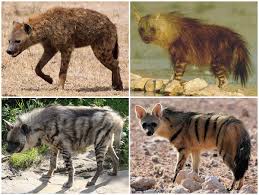
International Hyena Day 2025 (27th April): The four extant species of hyena or hyaenids found on the African continent are facing increasing threats, leading to population declines, according to conservation organisation, Wild Africa.
- Hyenas are dog-like carnivores belonging to the family Hyaenidae, native to Asia and Africa, noted for their scavenging habits.
- There are four extant hyena species:
- Spotted Hyena (Crocuta crocuta)
- Striped Hyena (Hyaena hyaena)
- Brown Hyena (Parahyaena brunnea)
- Aardwolf (Proteles cristatus)
- Habitat: Forest edges, grasslands, savannas, sub-deserts, and mountains up to 13,000 feet elevation.
- Distribution: Across Africa, parts of the Middle East, and Asia.
- Conservation Status (IUCN)
- Spotted Hyena: Least Concern but declining, with fewer than 50,000 individuals remaining.
- Striped Hyena: Near Threatened, with less than 10,000 mature individuals.
- Brown Hyena: Near Threatened, with just over 10,000 in the wild.
- Aardwolf: Least Concern, though exact numbers are unknown due to their elusive nature.
Bond Markets:

U.S. President Donald Trump has not only disrupted international trade rules but has also sought to challenge the independence of the U.S. Central Bank (Federal Reserve).
- A bond is a financial instrument that promises a fixed return (face value) at the end of a specific period, unlike equity, which has no fixed term or guaranteed returns.
- Bonds are generally safer investments used to hedge against risks or act as a store of value.
- Bond yields are inversely proportional to their market price: when prices fall, yields rise.
- Inflation erodes the real returns from bonds. If inflation exceeds bond yield, investors lose purchasing power.
- When inflation expectations rise, the Central Bank typically raises interest rates, causing bond prices to fall and yields to rise, impacting investment decisions across the economy.
- Currency depreciation also impacts foreign bondholders negatively, reducing their real returns when converting back to their home currency.
- The Indian Bond Market is a vital segment of the financial system where government entities, corporations, and financial institutions raise funds by issuing bonds.
- Investors provide loans to the issuers and, in return, receive periodic interest payments and principal repayment upon maturity.
Critical Tiger Habitat:

The Critical Tiger Habitat (CTH) of Sariska Tiger Reserve (STR) is likely to expand by approximately 4,500 hectares following a rationalisation exercise mandated by the Supreme Court of India’s Central Empowered Committee (CEC).
- Critical Tiger Habitat (CTH), also known as core areas of tiger reserves, are identified under the Wild Life Protection Act (WLPA), 1972.
- These are based on scientific evidence that “such areas are required to be kept as inviolate for the purpose of tiger conservation, without affecting the rights of the Scheduled Tribes or such other forest dwellers”.
- The notification of CTH is done by the state government in consultation with the expert committee constituted for the purpose.
- These areas are kept inviolate (free from human activities) for the purpose of tiger conservation.
- The forests peripheral to CTH are notified as buffer areas, which act as a transition between CTH and non-tiger reserves.
- Central Empowered Committee (CEC) was set up in 2002 (reconstituted in 2008) by the Supreme Court.
- It served as a watchdog for issues pertaining to environmental conservation and compliance.
- In 2023, the Supreme Court transferred the CEC, to the Ministry of Environment, Forest, and Climate Change.
Medium Range-Surface to Air Missile:
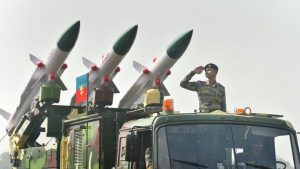
The Indian Navy has successfully test-fired a Medium range surface-to-air missile (MR-SAM) air defence missile system aboard the INS Surat warship in the Arabian Sea recently.
- It is a high-response, quick-reaction, vertically launched supersonic missile designed to neutralize enemy aerial threats – missiles, aircraft, guided bombs, helicopters, etc.
- It is developed jointly by Defence Research and Development Organisation (DRDO) and Israel Aerospace Industries, and is produced at Bharat Dynamics Limited (BDL).
- Each MRSAM weapon system comprises one command and control system, one tracking radar, missiles, and mobile launcher
- The mobile launcher is used to transport, emplace, and launch up to eight canisterised missiles in two stacks.
- It can fire the missiles in single or ripple firing modes from the vertical firing position.
- The weapon is 4.5 m-long, weighs approximately 276kg, and is equipped with canards and fins for control and manoeuvrability.
- It is equipped with an advanced active radar radio frequency (RF) seeker, advanced rotating phased array radar, and a bidirectional data link.
- It is powered by a dual-pulse solid propulsion system developed by DRDO.
- The propulsion system, coupled with a thrust vector control system, allows the missile to move at a maximum speed of Mach 2.
- The weapon has the ability to engage multiple targets simultaneously at ranges of 70 km.
Cucumber Mosaic Virus : Study
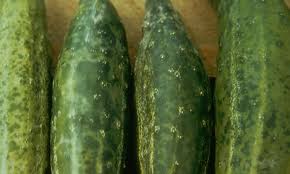
A team of researchers recently reported developing an RNA-based antiviral agent that confers strong protection against cucumber mosaic virus (CMV), a widespread and destructive plant virus.
- Cucumber Mosaic Virus (CMV) is one of the most common plant viruses.
- CMV was first identified in 1916 as the causal agent of cucumber and muskmelon disease in the United States.
- CMV infects more than 1,200 plant species, including critical food crops like cucumbers, squash, and cereals, and medicinal plants.
- It spreads through small sap-sucking insects called aphids.
- With nearly 90 aphid species capable of transmitting CMV, outbreaks are often difficult to contain.
- In India, CMV is responsible for 25-30% yield losses in banana plantations. In pumpkins, cucumbers, and melons, infection rates can soar up to 70%.
- Affected plants develop a mosaic discolouration, stunted growth, and commercially unviable fruits.
Exercise Balikatan 2025:

As many as 17,000 personnel are participating in the annual “Balikatan” exercises, which this year will simulate a “full-scale battle scenario” as the treaty allies seek to deter China’s ambitions in the waterway.
- It is the largest bilateral exercise conducted between the Armed Forces of the Philippines and the United States.
“Balikatan,” a Tagalog phrase that means “shoulder-to-shoulder,” characterizes the spirit of the exercise and represents the alliance between the Philippines and the United States. - Held annually, Exercise Balikatan is designed to enhance military interoperability and readiness in support of the Mutual Defense Treaty between the United States and the Philippines.
- The 2025 edition is the 40th iteration of the exercise.
- Distinguishing itself from past iterations, Balikatan 25 will feature a Full Battle Test that incorporates real-world forces and events into a virtual and constructive exercise scenario.
- The exercise will span all domains—air, land, sea, space, and cyber—testing the interoperability between U.S. and Philippine forces to simulate the defense of Philippine sovereignty.
- The exercise will consist of four primary components: a Combined Joint Logistics Over-the-Shore (CJLOTS) operation, humanitarian civic assistance (HCA) activities, a command-and-control exercise (C2X), and a Multilateral Maritime Exercise (MME).
- Each component will encompass several training events and engagement throughout the Philippines.
Indian Cybercrime Coordination Centre:
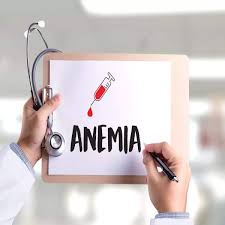
The government recently authorised Indian Cyber Crime Coordination Centre (I4C) to share and receive information from the Enforcement Directorate under the anti-money laundering law, a move aimed at detecting money trails and combating cyber frauds
- I4C has been established under the Ministry of Home Affairs (MHA) to act as a nodal point at the National level in the fight against cybercrime.
- It is designed to provide a framework and ecosystem for law enforcement agencies (LEAs) to deal with cybercrime in a coordinated and comprehensive manner.
- I4C brings together academia, industry, public, and government in the prevention, detection, investigation, and prosecution of cybercrimes.
- Headquarters: New Delhi
- Objectives:
- To act as a nodal point to curb Cybercrime in the country.
- To strengthen the fight against Cybercrime committed against women and children.
- Facilitate easy filing of cybercrime related complaints and identifying cybercrime trends and patterns.
- To act as an early warning system for LEAs for proactive cybercrime prevention and detection.
- Awareness creation among the public about preventing cybercrime.
- Assist States/UTs in capacity building of Police Officers, Public Prosecutors and Judicial Officers in the area of cyber forensic, investigation, cyber hygiene, cyber-criminology, etc.
- Identify the research problems and needs of LEAs and take up R&D activities in developing new technologies and forensic tools in collaboration with academia/research institutes within India and abroad.
- Components of I4C:
- National Cybercrime Threat Analytics Unit (TAU): For reporting threats pertaining to cybercrimes at regular intervals.
- National Cybercrime Reporting Portal (NCRP): To report various cybercrime complaints by citizens at all India levels on a common platform on a 24×7 basis from “anywhere, anytime”.
- National Cybercrime Training Centre (NCTC): To impart training to government officials, especially state law enforcement agencies.
- National Cybercrime Research and Innovation Centre: To carry out research for the development of indigenous tools for the prevention of cybercrimes.
- Platform for Joint Cyber Crime Coordination Team: For coordination, sharing of modus operandi of cybercrimes, data/information among states/UTs LEAs.
- Cybercrime Ecosystem Management Unit: For creating mass awareness in cyber hygiene for prevention of cybercrimes.
- National Cybercrime Forensic Laboratory (Investigation) Ecosystem: For helping LEAs in cyber forensics investigation.
National Zero Measles-Rubella Elimination Campaign:
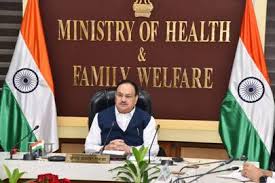
The National Zero Measles-Rubella Elimination Campaign (2025-26) has been launched on World Immunization Week (24-30 April), under the Universal Immunization Programme (UIP). It aims to eliminate Measles and Rubella (M-R) in India by 2026 through 100% immunization coverage.
- As per 2024–25, India’s M-R vaccination coverage is more than 90% for the two doses of M-R vaccine provided under UIP.
- In 2024, measles cases dropped by 73% and rubella cases by 17% compared to 2023.
- India aims to eliminate measles and rubella by 2026, focusing on achieving >95% coverage, strengthening surveillance, ensuring quick outbreak response, and addressing vaccine hesitancy through awareness campaigns.
- India received the M-R Champion Award (2024) from the M-R Partnership for its significant efforts in disease elimination.
- M-R are contagious viral diseases affecting mainly children. Measles, caused by the Morbillivirus (RNA virus), is highly infectious and can lead to severe complications including death.
- Rubella, caused by the rubella virus, is milder but poses a serious risk during pregnancy, potentially leading to Congenital
- Rubella Syndrome (CRS) with birth defects like deafness and heart abnormalities.
World Bank’s Poverty and Equity Brief 2025:
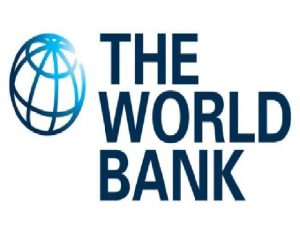
The World Bank’s Spring 2025 Poverty and Equity Brief acknowledged India’s success in lifting 171 million people out of extreme poverty between 2011-12 and 2022-23.
- Published twice a year, these briefs track poverty, shared prosperity, and inequality trends in over 100 developing countries.
- India’s Highlights:
- Extreme poverty (living under $2.15/day) declined from 16.2% (2011-12) to 2.3% (2022-23).
- Lower-middle-income poverty (living under $3.65/day) fell from 61.8% to 28.1%, lifting 378 million people.
- Multidimensional poverty declined from 53.8% (2005-06) to 15.5% (2022-23).
- Inequality reduction: Gini index improved from 28.8 to 25.5.
- Employment Growth: Urban unemployment dropped to 6.6%, the lowest since 2017-18.
Hindu Kush ICIMOD 2025 Report:
The Hindu Kush Himalaya (HKH) region, often called the “Third Pole,” plays a critical role in supporting river systems and water needs across South Asia. The latest ICIMOD report raises serious concerns about snow persistence and water security in the region. The International Centre for Integrated Mountain Development (ICIMOD) released a report on April 21, 2025, revealing the lowest snow persistence in 23 years in the Hindu Kush Himalaya, threatening river flows across South Asia.
Delhi Launches ‘Ayushman Vay Vandana’ Scheme Offering Free Rs 10 Lakh Health Cover to Seniors 70+:
With a vision to prioritize the welfare of the elderly, the Delhi government has introduced the Ayushman Vay Vandana Scheme, offering comprehensive health insurance coverage of Rs 10 lakh to citizens aged 70 years and above. The initiative focuses on delivering free health services, annual check-ups, and secure digital health records to ensure the dignity, care, and health security of Delhi’s senior population.The Delhi government, led by Chief Minister Rekha Gupta, officially launched the Ayushman Vay Vandana scheme on April 28, 2025, providing free health treatment up to Rs 10 lakh for senior citizens aged 70 years and above. The initiative aims to strengthen healthcare accessibility and offer security to the elderly in Delhi. The first set of Vay Vandana health cards were distributed at an event attended by CM Rekha Gupta and Union Minister Hardeep Singh Puri.
India Signs $7.4 Billion Deal with France for Rafale Fighter Jets:
India signed a landmark agreement with France for the purchase of 26 Rafale fighter aircraft worth approximately 630 billion rupees ($7.4 billion). This deal, which includes both single-seater and twin-seater versions of the fighter jets, aims to bolster India’s naval air power and strengthen its defence ties with France. The delivery of these aircraft is expected to be completed by 2030, with the deal providing both military and economic benefits, including the generation of jobs and business opportunities.
National Industrial Corridor Development Corporation (NICDC) Honored with Udyog Vikas Award:
The National Industrial Corridor Development Corporation (NICDC) received the Udyog Vikas Award at a prestigious event organized by Janmabhumi Daily in Kerala. The award acknowledges NICDC’s pivotal role in India’s industrial transformation, particularly through the development of the Palakkad Industrial Smart City. This project, part of a broader effort to develop Greenfield Industrial Smart Cities, aims to reshape Kerala’s industrial landscape.




